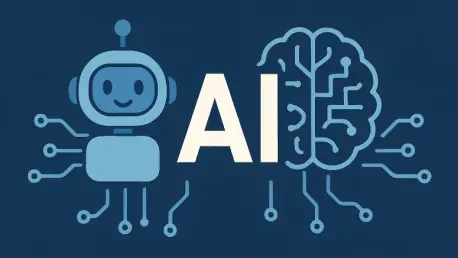In 2025, it’s no longer enough for artificial intelligence to be impressive—it needs to be trustworthy. And while businesses have rushed to embed AI into products, workflows, and decision-making, many are now confronting a quieter, more consequential challenge: verifying that what their AI says, does, and recommends is actually true, safe, and fit for enterprise use.
Here’s the truth: every CTO and CIO is now wrestling with a new reality—“AI is talking.” It’s generating emails, summarizing meetings, forecasting risk, flagging anomalies, and approving candidates. Basically, it’s shaping decisions faster than policies can catch up. But behind the confident outputs lies an unsettling question: Can you prove it’s not lying?
Be it hallucinated insights or unverifiable sources, generative and predictive AI models are exposing a deep fault line in enterprise deployments—a trust gap. If that gap isn’t addressed, it will threaten enterprise credibility at its core.
So, where exactly does trust begin to unravel in the enterprise AI lifecycle? To answer that, you need to understand the paradox at the heart of it all.
The Trust Paradox in Enterprise AI
The irony is hard to ignore. The more humanlike AI becomes in tone and interaction, the more easily it can deceive—intentionally or otherwise. Large language models, for example, are trained to predict language patterns, not truth. This means outputs can sound confident while being entirely fabricated.
This is the heart of the trust paradox: AI outputs feel reliable because they sound authoritative, even when they’re wrong. And in B2B contexts, that distinction matters deeply. Whether you’re recommending a treatment protocol, assessing loan eligibility, or performing a compliance check, accuracy is business critical.
And just when you think accuracy is the ceiling, AI pushes further, shifting from analysis to action.
AI’s Expanding Responsibility
AI systems are no longer confined to back-end analytics or auto-tagging content. They now prescribe actions. They surface business risks, prioritize leads, and approve product changes. They don’t just support decisions—they shape them.
But here’s the disconnect: enterprise trust hasn’t caught up with AI’s new responsibilities, and the implications for this are serious. When users can’t understand or verify how the bot reached its conclusions, adoption drops, or worse, blind trust leads to bad decisions. Either way, the system loses credibility.
If AI is now making judgment calls, then enterprises need a new baseline—one where transparency is the default.
Explainability is Not Optional Anymore
If enterprises want users to trust AI systems, they must make those systems legible. That means shifting explainability to a core product and compliance feature.
Explainability tools like SHAP, LIME, and attention mapping help reveal the internal reasoning behind model outputs. Yet many AI deployments in the wild still present results without citations, confidence scores, or any traceable logic.
Gartner now ranks explainability among the top five enterprise AI priorities for 2025, where Dawiso noted it as “the heartbeat of responsible AI.”
And for good reason: explainability protects user trust, model integrity, and legal exposure. If your AI says “no” to a loan or flags a patient as high-risk, you’d better be able to explain why, with evidence that can stand up to scrutiny.
Because “the model said so” is a liability, and as hallucinations enter the enterprise front door, the cost of ignoring this liability is becoming painfully clear.
When Models Hallucinate, Enterprises Pay the Price
Generative AI is especially prone to hallucinations, confidently presenting fabricated data, quotes, or citations as truth. For casual use cases, this is inconvenient. In the enterprise? It’s dangerous.
Consider the now-infamous legal case where a junior associate at a U.S. law firm used ChatGPT to draft a motion. The AI cited non-existent case law, and the firm was sanctioned.
This is a wake-up call across industries to realize that AI hallucinations can:
Misinform executive decisions
Damage client relationships
Introduce compliance violations
Undermine data integrity
And here’s the uncomfortable truth: no amount of post-editing can paper over a system built without verification. You can’t bandage trust. You have to build it into the foundation.
Verification and Auditability Must Be Designed in, Not Bolted on
The fix? Architecting systems that are verifiable by design.
This starts with robust model governance, including data lineage tracking, model documentation, and embedded audit trails. Think: Who trained this model on what data, for what purpose? And what controls are in place to detect drift or abuse?
Tools like model cards and datasheets for datasets—developed by Google and Microsoft, respectively—are helping teams build transparency from the start. Similarly, enterprise leaders are turning to retrieval-augmented generation to ground large language model responses in authoritative internal content.
But here’s what’s often missed: regulation might drive compliance, but it won’t guarantee trust. That lives in the hands of your users.
Trust is a User Experience
Let’s not forget: trust is felt. Users trust what they can understand, consistency, and tools that help them, not confuse, frustrate, or mystify them.
This means trust must be designed into the user experience. Use visible citations, confidence scores, disclaimers, and opt-out options. Provide toggles for “view reasoning” or “show data source.” Give users control.
Because even the best AI models fail without human-centric design. Your smartest model is only as useful as your users’ willingness to believe it.
So, how do you move beyond principles and actually put all this into motion? Let’s get tactical.
Five Principles to Guide Your Next Build
So, how do you operationalize AI trust across your enterprise stack?
Here are five actionable principles to start with:
Design for transparency
Build AI interfaces that surface how decisions are made. Use visual tools like confidence bars, input weights, and “why this result” panels.
Ground generative models in internal truth
Implement RAG pipelines and index trusted data sources, so your AI can cite your knowledge rather than fabricate its own.
Audit models continuously
Track accuracy, fairness, and drift with tools like Arize, Fiddler, or WhyLabs. Create model dashboards the same way you monitor uptime.
Build cross-functional review boards
Establish AI review councils that include stakeholders from product, legal, engineering, and ethics. Trust is a shared responsibility.
Educate your users
Provide clear guidance to employees and customers on when and how to trust AI outputs. Use tooltips, onboarding, and plain-language policies.
Because at the end of the day, your AI’s usefulness comes from whether people believe it.
AI Maturity is Trust Maturity
Trust in AI isn’t something you deploy. It’s something you build—and keep building.
This article has outlined the challenges that threaten enterprise AI efforts: unverifiable outputs, lack of transparency, model hallucinations, and the widening trust gap between vendor claims and user expectations. These are indicators of a deeper issue—organizations applying AI without the architecture, governance, or user education needed to sustain confidence at scale.
Artificial intelligence reshapes how decisions are made, how people interpret information, and how much faith they place in the systems that speak on behalf of the business.
And if your enterprise AI isn’t trusted by users, by customers, by regulators—it’s not too late to fix what broke.
But first, you have to prove it’s not lying.









